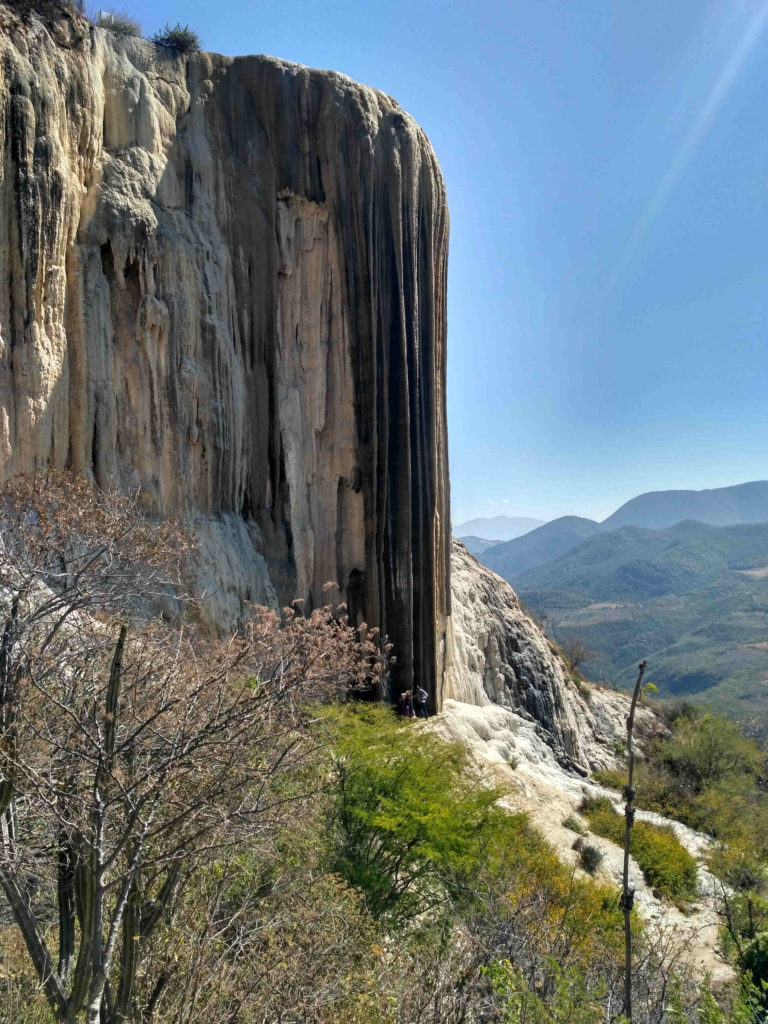This post concerns the representation theory of the symmetric group over the complex numbers. Recall that the irreducible representations of the symmetric group ![]() are indexed by partitions of
are indexed by partitions of ![]() . Let
. Let ![]() be the irreducible representation indexed by
be the irreducible representation indexed by ![]() . I want to say some words about the theorem that the decomposition of the induced module
. I want to say some words about the theorem that the decomposition of the induced module ![]() is given by the decomposition into eigenspaces under the action of the Jucys-Murphy element.
is given by the decomposition into eigenspaces under the action of the Jucys-Murphy element.
First, the relevant Jucys-Murphy element is
![]()
The way it acts on ![]() is not as an element of
is not as an element of ![]() but by
but by ![]() This is well-defined since
This is well-defined since ![]() commutes with
commutes with ![]() .
.
What this action defines is a natural transformation from the functor ![]() to itself. The induction functor is (bi)-adjoint to the restriction functor and this natural transformation is even simpler to construct on the adjoint side. Recall that if
to itself. The induction functor is (bi)-adjoint to the restriction functor and this natural transformation is even simpler to construct on the adjoint side. Recall that if ![]() and
and ![]() are adjoint functors, then there is an isomorphism
are adjoint functors, then there is an isomorphism
![]()
Here ![]() refers to the natural transformations from
refers to the natural transformations from ![]() to itself, and the map in this isomorphism is given by pre- and post-composition by the unit and counit of the adjunction.
to itself, and the map in this isomorphism is given by pre- and post-composition by the unit and counit of the adjunction.
And the way that ![]() yields a natural transformation from
yields a natural transformation from ![]() to itself is very simple, it’s just by its usual action as an element of
to itself is very simple, it’s just by its usual action as an element of ![]() . If you transport this natural transformation to a natural transformation of the induction functor via the method I just mentioned, then you get the formula mentioned above.
. If you transport this natural transformation to a natural transformation of the induction functor via the method I just mentioned, then you get the formula mentioned above.
Now given a pair of adjoint functors ![]() and
and ![]() , a natural transformation
, a natural transformation ![]() from
from ![]() to
to ![]() (and hence from
(and hence from ![]() to
to ![]() ) and a complex number
) and a complex number ![]() , we can define a functor
, we can define a functor ![]() by
by
![]()
and similarly for ![]() (this requires some linearity assumptions, but they’re satisfied here. Also you could take generalised eigenspaces if you wanted to, but in our application there is no difference).
(this requires some linearity assumptions, but they’re satisfied here. Also you could take generalised eigenspaces if you wanted to, but in our application there is no difference).
When you do this, the functors ![]() and
and ![]() are adjoint:
are adjoint:
Proof: Both ![]() and
and ![]() are the
are the ![]() -eigenspace of the action of
-eigenspace of the action of ![]() on
on ![]() .
.
Now apply this to our situation. We also use the following standard fact about the action of the Jucys-Murphy element (as developed e.g. in the Vershik-Okounkov approach):
Consider the decomposition
![]()
Then the Jucys-Murphy element ![]() acts by the scalar
acts by the scalar ![]() on
on ![]() , where
, where ![]() is the content of the box
is the content of the box ![]() added to
added to ![]() to get
to get ![]() .
.
Now translating this statement via the above yoga onto the adjoint side, we get
In the decomposition
![]()
the Jucys-Murphy element ![]() acts by the scalar
acts by the scalar ![]() on
on ![]() , where
, where ![]() is the content of the box
is the content of the box ![]() added to
added to ![]() to get
to get ![]() .
.






